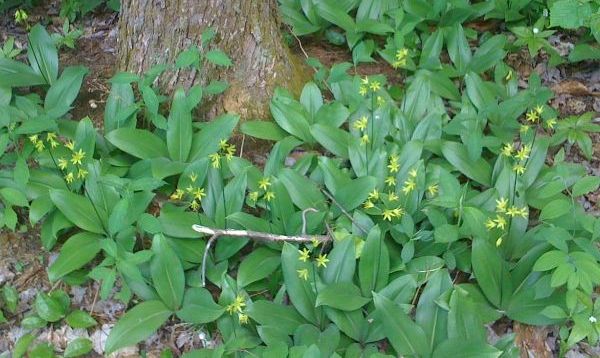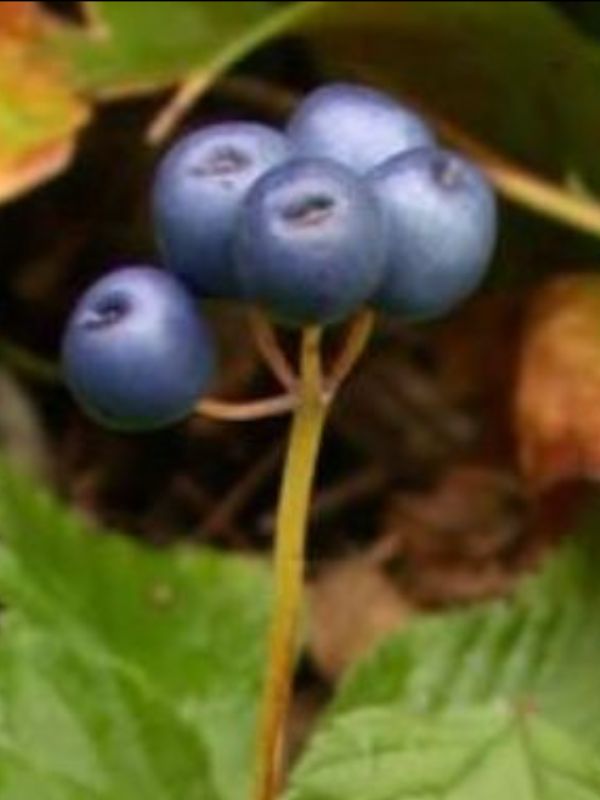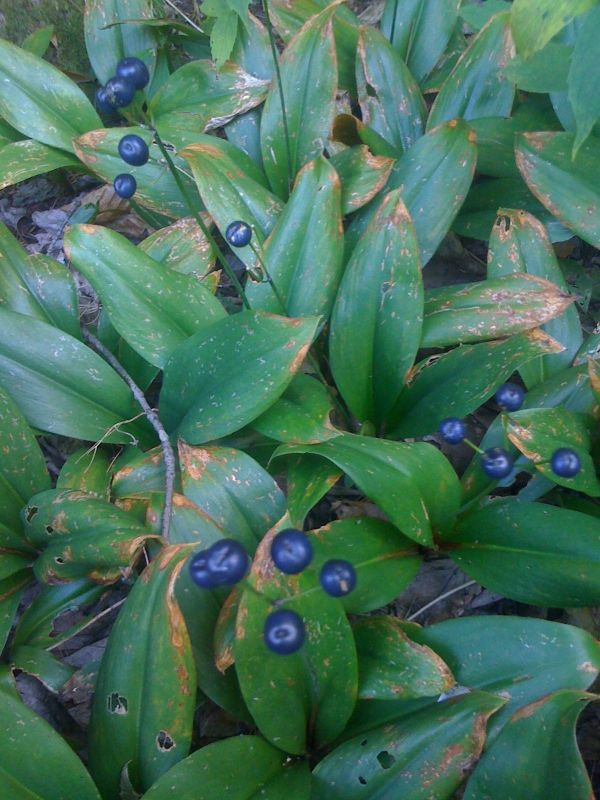Bluebead Lily, Clintonia borealis
By Joyce Tuharsky, WORC Member
Bluebead lilies are charming woodland perennials that emerge in early spring with simple, smooth, glossy leaves that grow wide and strappy. Each plant has 2 to 4 curved leaves, up to 12 inches long, with parallel veins, including a prominent central vein. Before its blooms appear, this plant is often confused with native leeks or orchids.
In late spring, a leafless stalk, up to 20 inches high, rises above the basal leaves. Atop this stalk, an umbel of 3–6 creamy yellow, elongated, bell-shaped flowers dangle and nod. Each dainty flower is about ¾-inches wide, with petal-like sepals and six stamens.

The flowers are followed by berries in late summer. About a quarter-inch wide, the berries start green, shift to white, and then ultimately to a deep porcelain blue, standing out in sharp contrast to the greens and browns of the forest floor. It is these striking fruits that give the plant its common name. However, to humans, the berries are very bitter and mildly toxic. They are better left for wildlife and seed dispersal.
Indeed, the berries are relished by birds and small mammals such as chipmunks. Native bees, bumble bees, butterflies, flies, and beetles frequent Bluebead lily for both nectar and pollen.


Bluebead lily is a wide-ranging species found in moist, cool forests in central and eastern North America, including the Great Lakes region, and ranging southward into the subalpine zones of the Appalachian Mountains. However, this plant has been impacted by habitat loss in some regions, leading to concerns about its conservation status. It is considered endangered in Indiana and Ohio and threatened in Maryland and Tennessee.
While primarily a wildflower, Bluebead lily can be cultivated in gardens that mimic its natural habitat. It prefers moist, dappled shade and well-drained, organic-rich soil. It is stressed by too much sun, heat, or drought. Under good conditions, Bluebead lilies will spread slowly by underground rhizomes, forming an eye-catching ground cover. It is great for woodlands, shade gardens, or along ponds/streams. Pairs well with Canada mayflower, Starflower, Bunchberry, White Baneberry, or Zigzag goldenrod.
